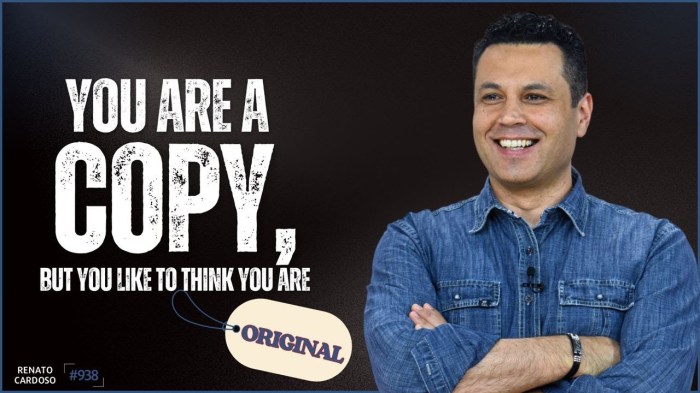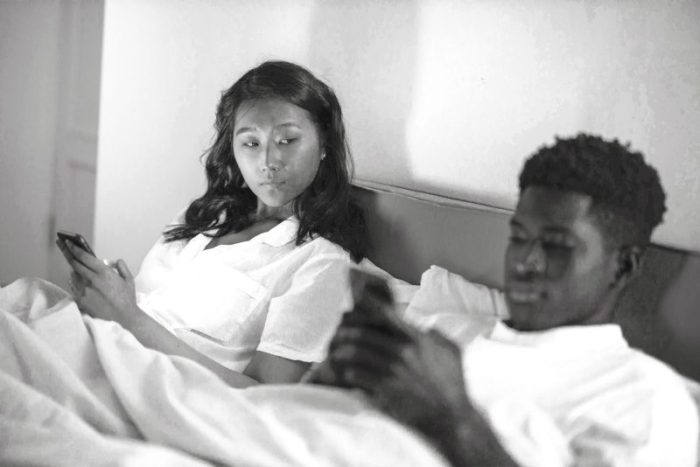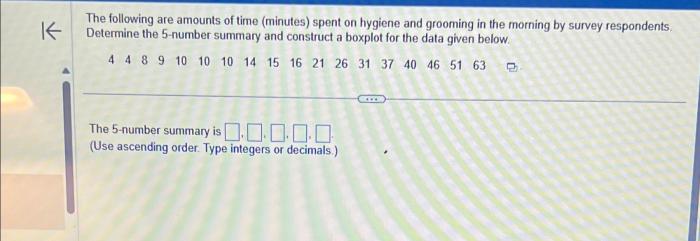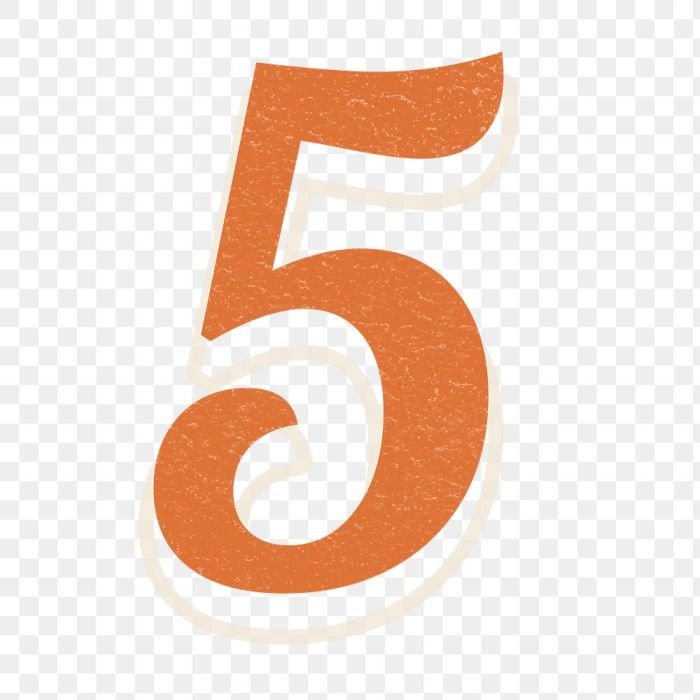Dress Codes 101 guide dives deep into the world of dress regulations, exploring everything from school uniforms to professional attire. We’ll uncover the reasons behind these codes, examine their historical context, and analyze the different ways they’re implemented across various settings. From comparing dress code policies globally to addressing common concerns like religious attire, this guide aims to equip you with a complete understanding of dress codes.
Understanding dress codes is more than just knowing what to wear. It’s about comprehending the intent, the history, and the potential impact of these policies. We’ll explore the essential elements of a well-crafted dress code, including clear guidelines, examples, and potential conflicts. Learn how to navigate these policies and create a dress code that fosters inclusivity and respect for diverse needs.
Introduction to Dress Codes
Dress codes are formalized rules that dictate acceptable attire in various settings. These regulations encompass a wide spectrum, from school uniforms to professional workplace standards and even specific event requirements. Understanding the purpose, rationale, and historical context behind dress codes provides a framework for evaluating their effectiveness and impact. Dress codes are designed to create a specific atmosphere and maintain order, while also ensuring that certain safety and ethical standards are adhered to.The implementation of dress codes is driven by a range of factors, including the need for a structured environment, promotion of safety, and the establishment of a shared aesthetic within a community.
For instance, school dress codes often aim to foster a focused learning environment, while workplace dress codes are designed to project a professional image and maintain a specific corporate culture.
Dress Code Purposes and Rationale
Dress codes are established for a variety of reasons, depending on the context. In educational settings, they can aim to reduce distractions and promote a focus on academics. In the workplace, dress codes often serve to project a professional image, reinforce company culture, and ensure safety. Specific events or organizations might have dress codes to maintain a certain aesthetic or to adhere to cultural norms.
Historical Context of Dress Codes
The concept of dress codes has existed for centuries. Historically, dress codes often reflected social hierarchies, religious beliefs, and cultural norms. For example, the formal attire expected in Victorian-era England was a manifestation of social status. More recently, the adoption of school uniforms in various countries aimed to foster equality and reduce peer pressure based on clothing.
Examples of Effective Dress Code Policies
Numerous successful dress code policies exist across various settings. Many schools have successfully implemented uniform policies, which often result in a more focused learning environment and a reduction in bullying related to clothing choices. Some workplaces have implemented policies that encourage business casual attire, which allows employees to feel comfortable while still projecting a professional image. Specific event dress codes, such as formal galas or religious ceremonies, contribute to the desired ambiance of the occasion.
Comparison of Dress Code Policies Across Different Regions
| Country/Region | Type of Dress Code | Rationale | Enforcement |
|---|---|---|---|
| United States (Public Schools) | Varying, from no dress code to strict uniforms | Promoting safety, reducing distractions, fostering a sense of community, and potentially reducing socioeconomic disparities. | Often dependent on individual school policies and local regulations. Enforcement can range from verbal warnings to disciplinary actions. |
| Japan (Workplace) | Often formal, with specific guidelines for business attire. | Maintaining a professional image, demonstrating respect for seniority, and upholding company culture. | Enforcement varies based on company policies and organizational culture. Violations can range from warnings to termination. |
| France (Schools) | Generally less restrictive compared to some other European countries. | Fostering individuality and avoiding strict standardization. | Enforcement is generally less stringent compared to countries with more comprehensive uniform policies. |
| South Korea (Workplace) | Formal business attire is common. | Similar to Japan, focusing on professionalism and respect. | Emphasis on proper business attire, often with specific expectations for men and women. |
Components of a Dress Code: Dress Codes 101 Guide
A well-defined dress code is crucial for maintaining a professional, safe, and respectful environment in any setting. It establishes clear expectations for appropriate attire, preventing misunderstandings and ensuring everyone feels comfortable and included. A comprehensive dress code goes beyond simply stating what’s acceptable; it also Artikels what is prohibited to avoid ambiguity and potential conflict.A well-structured dress code promotes a sense of unity and shared understanding within a community, fostering a positive and productive atmosphere.
My dress code 101 guide is all about looking sharp without breaking the bank. It’s not just about what you wear, but also about understanding your budget and making smart choices. Just like you should avoid the terrible financial advice sometimes given by friends, found in the article 6 worst financial suggestions given your friends , you need to be discerning about dress code advice too.
Ultimately, a good dress code 101 guide will help you feel confident and stylish without overspending.
Clear communication through specific examples is vital to ensure everyone interprets the code consistently and accurately.
Key Elements of a Dress Code
A robust dress code should meticulously Artikel acceptable attire and explicitly prohibit inappropriate items. This clarity prevents misinterpretations and ensures that everyone is on the same page regarding what is and isn’t permitted. Precise language is paramount to avoid ambiguity. Vague terms can lead to differing interpretations, ultimately hindering the effectiveness of the dress code.
Navigating dress codes can be tricky, right? Understanding the rules is key, but sometimes the underlying anxiety about fitting in or feeling judged can be a bigger hurdle. Fortunately, checking out some techniques to manage anxiety, like the ones in this insightful guide on 6 smart ways overcome anxiety that you probably haven’t tried , can help you approach these situations with more confidence.
Ultimately, knowing the dress code and being comfortable in your own skin are essential parts of the dress code 101 guide.
Importance of Clear and Unambiguous Language
Clear and unambiguous language is essential for a dress code to be effective. Vague terms, such as “appropriate attire,” can lead to different interpretations and cause confusion among individuals. A well-written dress code must clearly define acceptable attire and explicitly prohibit inappropriate items, using precise and unambiguous language.
Examples of Acceptable and Unacceptable Attire
Providing specific examples of acceptable and unacceptable attire is critical for effective communication. This allows individuals to readily understand the dress code’s expectations. For example, stating that “business casual” includes “slacks or khakis with a collared shirt” is more helpful than simply saying “business casual attire.”
So, you’re tackling dress codes 101? Knowing the rules is crucial, but sometimes, understanding how to navigate social situations, like avoiding those 11 common relationship mistakes, can be just as important. For example, consider how your attire might affect your partner’s feelings, and check out 11 common mistakes relationships that you can avoid for some valuable insights.
Ultimately, a well-thought-out dress code approach is all about respectful communication and understanding your surroundings. Perfecting your dress code choices takes more than just following the rules; it’s about connecting with your environment and those around you.
Types of Dress Codes
Different settings require different dress codes. The table below Artikels various types of dress codes and the specific items they address. This structured approach ensures that expectations are clearly defined for each context.
| Type of Dress Code | Acceptable Attire | Prohibited Items | Specific Examples |
|---|---|---|---|
| Professional Business | Business suits, dress pants/skirts, collared shirts/blouses | Shorts, t-shirts, flip-flops, jeans | A suit jacket and dress pants for men, a skirt suit or dress pants with a blouse for women; contrasted with a t-shirt and jeans or shorts. |
| Casual Business | Dress pants/skirts, collared shirts/blouses, khakis, nice tops | Shorts, tank tops, flip-flops, athletic wear | Khakis with a polo shirt or a button-down shirt; contrasted with a t-shirt and shorts. |
| School Uniform | Specific school-issued clothing | Personal clothing, branded items, accessories | A specific school uniform of polo shirts, pants, and school-issued jackets; contrasted with jeans, personal branded items, or accessories. |
| Formal Events | Evening gowns, formal suits, cocktail dresses | Casual clothing, jeans, sneakers | A tuxedo and a dress for a formal event; contrasted with casual wear like jeans or sneakers. |
Addressing Specific Concerns
Crafting a dress code that works for everyone requires careful consideration of diverse needs and beliefs. It’s crucial to acknowledge that dress codes can impact individuals’ sense of self and belonging, especially when they conflict with personal expression or religious practices. Creating a truly inclusive policy involves understanding these potential conflicts and developing solutions that respect individual differences while maintaining a safe and productive learning or work environment.Addressing potential concerns proactively is key to preventing misunderstandings and ensuring that the dress code policy serves as a tool for fostering harmony, not division.
This involves thoughtful consideration of diverse backgrounds and perspectives, aiming for a policy that is inclusive and respectful of all.
Religious Attire
Religious garments often hold significant cultural and personal meaning. Dress codes should recognize and accommodate these practices whenever possible. A flexible approach is essential, allowing for the expression of religious identity without compromising safety or the core principles of the dress code. Examples of accommodations could include exemptions for head coverings, specific garments, or religious jewelry.
Personal Expression
Individual expression is a fundamental aspect of identity. A dress code should strive to balance the need for a consistent visual identity with the importance of allowing for personal expression within reasonable boundaries. The focus should be on creating a framework that encourages a sense of belonging for everyone while maintaining an environment free from distractions or disruptions.
Examples of this might include guidelines about the appropriate level of embellishment or attire that could be distracting to others.
Addressing Potential Conflicts
| Concern | Potential Solution | Example | Implementation Considerations |
|---|---|---|---|
| Religious Attire | Offer reasonable accommodations for religious garments. | Allowing students to wear hijabs, turbans, or other head coverings that are part of their religious practice. | Ensure accommodations don’t pose a safety risk or disrupt the learning environment. Develop a clear process for requesting and approving accommodations. |
| Personal Expression | Establish clear guidelines for acceptable levels of personal expression. | Allowing for diverse styles within a specific color palette or material restrictions. | Maintain a focus on professionalism and appropriateness for the context. Clearly define “distracting” or “disruptive” attire to avoid ambiguity. |
| Cultural Clothing | Acknowledge and accommodate cultural dress codes. | Allowing students to wear traditional clothing for cultural events or celebrations. | Ensure that these accommodations don’t create safety or hygiene concerns. Educate staff and students on different cultural practices. |
| Gender Expression | Allow for a range of gender expressions while maintaining appropriate standards. | Permiting students to express their gender identity through clothing choices while maintaining standards of modesty and safety. | Avoid gender-specific attire restrictions unless absolutely necessary for safety or hygiene reasons. |
Implementing and Enforcing Dress Codes
Crafting a dress code policy is only half the battle. Successfully implementing and enforcing it requires careful planning, clear communication, and consistent application. This phase ensures the policy isn’t just a document, but a practical guideline that promotes a positive and productive environment.A well-implemented dress code fosters a sense of professionalism, promotes safety, and creates a clear expectation for behavior.
It’s a vital aspect of maintaining order and respect within any organization, whether it’s a school or a workplace.
Implementing a New Dress Code Policy
A smooth implementation hinges on careful planning. First, ensure the dress code is communicated clearly and consistently to all stakeholders. This includes staff, students, or employees. This transparency is paramount to ensuring everyone understands the expectations.
- Develop a comprehensive communication plan. This should Artikel how and when the dress code will be communicated, who will be responsible for the communication, and what resources will be used to spread the word.
- Establish a timeline for implementation. A well-defined schedule ensures the transition is managed efficiently and allows for adequate preparation.
- Conduct training sessions for staff members or administrators. Proper training ensures consistent enforcement across the board and minimizes confusion.
- Create a feedback mechanism. This allows for continuous improvement and addresses any concerns promptly.
Importance of Consistent Enforcement
Inconsistency in enforcement undermines the entire purpose of a dress code. Students or employees are more likely to follow the rules if they see that everyone is held accountable.
- Consistent enforcement builds trust and respect for the rules.
- It prevents favoritism and ensures fairness for all.
- It creates a predictable and safe environment.
- Clear and concise consequences for violations, communicated beforehand, are essential to avoid confusion and potential conflict.
Effective Communication Strategies
Clear and effective communication is crucial to the success of any dress code policy. Students or employees need to understand the reasons behind the rules and the positive impact of adherence.
- Use multiple communication channels. Combining email, newsletters, posters, and even in-person announcements ensures the message reaches everyone. For instance, a school could use a weekly bulletin and a school-wide announcement to reinforce the dress code.
- Emphasize the rationale behind the dress code. Explain the reasons for the specific rules, such as safety concerns or maintaining a professional image. For example, explaining that uniforms help maintain a distraction-free environment during lessons will help students understand the policy.
- Provide examples of acceptable and unacceptable attire. Visual aids like photos or illustrations can significantly enhance understanding. A visual representation of appropriate clothing choices can be incredibly effective in conveying the policy’s intent.
- Address concerns promptly and respectfully. Create a forum for questions and address any concerns directly and constructively. A designated email address or online forum for questions can facilitate this.
Effective Communication Tools
Choosing the right tools makes a difference. Tailoring the communication style to the target audience (students or employees) is critical.
- School newsletters: Regularly update students and parents on dress code policies and expectations. Consider including a section dedicated to frequently asked questions (FAQs) regarding the dress code.
- School website: Create a dedicated page with the dress code policy, FAQs, and contact information. This allows easy access for students, parents, and staff.
- Visual aids: Use posters, infographics, or presentations to clearly communicate the dress code. These materials should be placed in high-traffic areas, such as hallways and classrooms.
- Social media: Utilize social media platforms to share important announcements and reminders about the dress code. This can be particularly effective for reaching students or employees who are more active online.
Case Studies of Dress Code Policies
Dress codes, while often perceived as simple rules, can have a profound impact on the environment and behavior of individuals within an organization or institution. Understanding how different dress code policies have been implemented and the resulting outcomes provides valuable insight into the complexities of managing such policies. Analyzing successful and unsuccessful examples highlights crucial factors for effective implementation.Effective dress code policies, when tailored to the specific context, can foster a sense of professionalism, maintain a safe and respectful atmosphere, and even boost morale.
Conversely, poorly conceived or enforced policies can lead to resentment, reduced productivity, and a negative overall environment. This section explores case studies, both positive and negative, to illustrate the diverse impacts of dress codes.
Positive Outcomes from Well-Implemented Dress Codes
Well-implemented dress codes can create a more unified and professional atmosphere. In professional settings, consistent dress can project a sense of professionalism and respect, enhancing the image of the organization. This can improve client relations and encourage a sense of unity and shared identity amongst employees. For educational settings, well-defined dress codes can sometimes help reduce distractions and maintain a focused learning environment, though this is often highly debated.
For example, some schools have reported that dress codes focused on minimizing disruptive clothing choices have led to a reduction in disruptive behavior.
Examples of Dress Codes Facing Criticism
Dress codes that are perceived as overly restrictive, discriminatory, or disproportionately impacting certain demographics have often drawn significant criticism. One common source of criticism involves dress codes that disproportionately affect students from lower socioeconomic backgrounds, as certain styles or brands of clothing may be more expensive or inaccessible. Further, dress codes that seem arbitrary or that lack clear rationale often lead to resentment and a feeling of unfair treatment.
For example, a dress code that bans certain colors or styles without a clear connection to safety or professionalism may face backlash.
Impact on Self-Esteem and Behavior
Dress codes can significantly affect students’ or employees’ self-esteem and behavior. Restrictive or inappropriate dress codes can lead to feelings of inadequacy, shame, and exclusion. Conversely, dress codes that are inclusive and aligned with the overall culture of the organization can promote a sense of belonging and pride. The perception of fairness and the clarity of the dress code guidelines are crucial factors in determining its impact on self-esteem and behavior.
For instance, a dress code that is seen as biased or arbitrary can lead to decreased motivation and increased frustration.
Table of Dress Code Policies
| Dress Code Policy | Key Elements | Outcomes | Critique |
|---|---|---|---|
| University’s Professional Dress Code | Required business casual attire for all classes and meetings; specific guidelines for acceptable footwear. | Improved professionalism, fostered a sense of unity amongst students, reduced distractions during class. | Some felt the dress code was overly restrictive and not inclusive of various student identities and needs. |
| High School’s Uniform Policy | Mandatory school uniform, with specific requirements for shirt colors, pants/skirts, and shoes. | Improved discipline and school safety, decreased distractions in the classroom, and created a more focused learning environment. | Concerns raised about the cost of uniforms for families with limited resources, and potential for stifling creativity and self-expression among students. |
| Corporate’s “Business Professional” Dress Code | Mandatory suits and ties for men, formal dresses for women. | Strong image of professionalism, fostered a sense of equality among employees, and enhanced the image of the company. | Some found the policy outdated and not reflecting the modern workplace. It was seen as restrictive for some individuals and led to difficulties in expressing personal style. |
Future Trends in Dress Codes
Dress codes are evolving beyond their traditional function of maintaining order and professionalism. Modern dress codes are increasingly being viewed as instruments for reflecting and shaping organizational culture, fostering inclusivity, and promoting sustainability. Understanding these evolving trends is crucial for administrators and organizations striving to create a positive and productive environment for all members.This shift reflects a broader societal change in values and priorities, where employees and students are increasingly seeking environments that align with their personal values.
This necessitates a proactive approach to dress code management that considers not only the practicalities but also the social and ethical dimensions.
Emerging Trends in Dress Code Policies
Modern dress codes are moving away from rigid, often outdated, standards towards more flexible and inclusive policies. Organizations are recognizing the importance of accommodating diverse needs and preferences, promoting comfort and practicality, and reducing barriers to participation. The focus is shifting from dictating specific styles to establishing guidelines that allow for expression while maintaining a professional and respectful environment.
- Inclusivity: Dress codes are increasingly designed to be inclusive of a wider range of body types, genders, and cultural backgrounds. This involves avoiding gender-specific attire requirements and offering more options for individuals with diverse needs, such as those with disabilities. For example, schools may allow students to wear comfortable clothing suitable for physical activity or accommodating medical needs.
- Sustainability: Environmental consciousness is driving the adoption of more sustainable dress code practices. Organizations are exploring ways to reduce their environmental impact by encouraging the use of eco-friendly materials, promoting reusable clothing, and discouraging the use of single-use or fast fashion items. This could include encouraging the use of secondhand clothing or specifying materials such as organic cotton.
Adapting Dress Codes to Changing Social Norms
The success of any dress code policy hinges on its ability to remain relevant and adaptable to changing social norms. Ignoring these evolving values can lead to misunderstandings, conflicts, and a perception of being out of touch. A responsive approach is essential to fostering a harmonious and inclusive environment.
- Flexibility: Dress codes need to be flexible enough to accommodate evolving styles and preferences without sacrificing the core principles of professionalism and respect. Instead of strict prohibitions, guidelines should focus on achieving a consistent professional image while allowing for personal expression.
- Open Communication: Open communication channels are critical to understanding the perspectives of employees and students. Actively soliciting feedback and incorporating diverse viewpoints into the dress code policy ensures that it remains relevant and responsive to the needs of the community.
Innovative Approaches to Dress Code Implementation
Innovative approaches to dress code implementation emphasize education and understanding over strict enforcement. This often involves a combination of clear communication, flexible guidelines, and ongoing dialogue. This shift emphasizes education and understanding over punitive measures.
- Community Engagement: Engaging employees or students in the development of the dress code policy fosters a sense of ownership and encourages adherence. Workshops and discussions can provide a platform for expressing concerns and preferences.
- Focus on Principles: Shifting the focus from specific items of clothing to underlying principles like professionalism, respect, and safety fosters a more adaptable and inclusive environment. This allows for a broader interpretation of dress code compliance.
Potential Challenges in Adapting Dress Codes, Dress codes 101 guide
Adapting dress codes to evolving trends can present some challenges. Maintaining a balance between inclusivity and maintaining a professional image is crucial. Finding a balance between respecting individual expression and adhering to professional standards requires careful consideration.
- Balancing Inclusivity and Professionalism: Striking the right balance between accommodating diverse needs and maintaining a professional image can be challenging. Open communication and clear guidelines are essential for establishing shared understanding.
- Enforcement Concerns: Implementing and enforcing flexible dress codes may present challenges. It requires a shift from strict enforcement to education and a focus on consistent application of guidelines.
Concluding Remarks
In conclusion, Dress Codes 101 guide provides a thorough exploration of dress codes, examining their purpose, components, and implementation. We’ve covered the historical context, analyzed diverse policies, and addressed potential conflicts. This comprehensive guide equips you with the knowledge to understand, create, and implement effective dress codes. Looking ahead, we also touched on future trends, highlighting the importance of adaptability and inclusivity.










